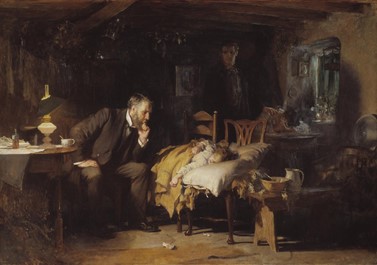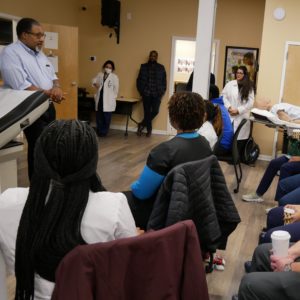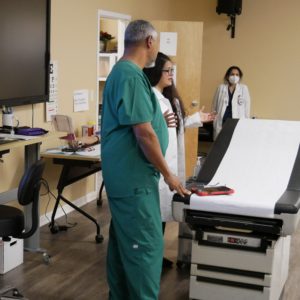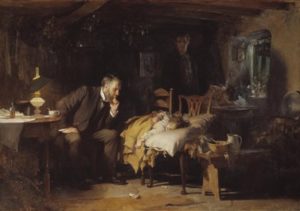
Throughout my medical school and neurological surgery training, I often wondered what qualities in a physician that fellow medical professionals sought out in choosing a doctor? What makes a doctor’s doctor? I have been blessed in my career to have had the opportunity to train with inspirational physicians and mentors, many were doctor’s doctor. In my medical journey I have been privileged to study under the Chairman of the Department of Emergency Medicine at Cook County Hospital, Dr. Robert Simon, also the opportunity to be mentored by Dr. Howard Barrow, neurologist and professor at McMaster DeGroot School of Medicine, considered the grandfather of problem-based learning(PBL), to work in my undergraduate years at the Banting and Best Institute, where Charles Banting discovered insulin and to have been trained by Dr. Jules Hardy renown Pituitary Surgeon to name a few. Many of these physicians were indeed doctor’s doctors.
As a medical school professor, I have often pondered on what pearls of wisdom I can share with my medical students, as to what makes a doctor’s doctor. I read an article recently, written by Erik Hamre; titled “How Tom Brady Became the Best Quarterback in the NFL.” Not being a football aficionado, I learned that Tom Brady was not always destined for greatness. Hamre details that Brady was 199th draft pick in the year 2000 draft. He also reports that the draft report described Brady as “poor build, skinny, lacks great physical stature and strength, lacks mobility and ability to avoid the rush, lacks a really strong arm, can’t drive the ball downfield, does not throw a really tight spiral, system-type player who get exposed if forced to ad-lib and gets knocked down easily.” So much for that, “this year was his third super bowl since he turned 40 and he’s now considered the greatest quarterback of all-time.”

I couldn’t help but compare and see the analogy with physicians who become the best at their craft, becoming a doctor’s doctor. Having trained and taught at many top tier USA and Canadian medical schools, both allopathic and osteopathic, I have learned that many of the physicians who went on to become a “doctor’s doctor” did not graduate from ivy league schools, nor in the top ten percent of their class. Most did not have a privileged pedigree, come from wealth or score in the stratosphere on standardized exams such as MCAT or USMLE/COMLEX. Yet, they went on to become a trusted “doctor’s doctor.”
My response, the title of a lecture I deliver yearly is “it’s the doctor in you.” Seth Godin, American Author has stated, “our credential-obsessed society teaches high achievers to equate success with approval from an external authority. Unfortunately, this outlook undermines your ability to trust yourself.
It is a convenient place to hide from our own potential. Godin goes on to question, the fact that you have a degree doesn’t mean you have insight, experience, or concern. You’ve acquired a piece of paper, but that doesn’t mean you care.”
More significantly, are you willing to persevere and do you have compassion. “It’s the doctor in you,”
that will instill a desire, a drive to continue to learn, long after medical school is completed.
This brings to mind the adage, “What do you call the person who graduated last in your medical school class?” Doctor. Medical students and doctors early in their career do not need to be trapped in their past. As TIM Denning states. “The past in your default program.” And to beat the default program, you have to change.
Being a doctors’ doctor has been an enormous privilege and honor. Bearing witness to the relentless and pernicious stigma in the house of medicine and how that ravages the minds and souls of our brothers and sisters in medicine has been a driving force. Through my teaching and mentorship, I know that there are many young and early-career physicians taking up the reins and making a commitment to physician health.
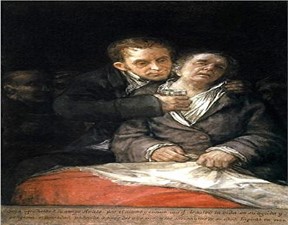
Being a doctors’ doctor can be a worthwhile experience, however it can be a daunting encounter for some. Caring for doctors may for some manifest feelings of inferior professional competence and feel pressured, strained and insecure. There are some doctors who prefer and choose to avoid such encounters. Other qualities of a doctor’s doctor is the ability to listen and be a good communicator.
“Listen to your patient; he is telling you the diagnosis.” Sir William Osler
But what it does mean is that the patient will provide doctors with enough clues to make the diagnosis, sometimes even before we examine them. For years I have taught my medical students when exiting a patient’s room after taking a history, if you are left in a quandary as to what could be possibly wrong with the patient, you need to return to the patient’s bedside and explore the history further, as 80% of the diagnosis is discoverable in the history.
Dr. Lisa Sanders an internist and author stated:” in an interview on NPR about her book, “Every Patient Tells a Story,” she aptly points out that there are two conversations going on at once. One is with the person telling the doctor about their problem. The second is a simultaneous conversation going on in the doctor’s head when they are thinking, “what does it mean and what do I ask next?” This second conversation frequently fogs the patient’s message and leads to the doctor interrupting the patient.”
Over 30 years ago a landmark study published in the Annals of Internal Medicine (Nov. 1984) reported that on average, physicians interrupted their patients after only 18 seconds. It should be noted that not all interruptions are verbal, a knock on the door, beeper interruptions, and computer use all interfered with communication, and increased frequency of interruptions are associated with less favorable patient perceptions of the office visit.”
A more recent study published in the Journal of General Internal Medicine (online, July 2, 2018) assessed 112 doctor-patient interactions between 2008 and 2015. This study reported that the clinician interrupted the patient after a medial of 11 seconds. The authors of this study concluded:
“The medical interview is a pillar of medicine. It allows patients and clinicians to build a relationship. Ideally, this process is inherently therapeutic, allowing the clinician to convey compassion, and be responsive to the needs of each patient. Eliciting and understanding the patient’s agenda enhances and facilitates patient-clinician communication.”
“The good physician treats the disease; the great physician treats the patient with the disease.”
Sir William Osler
Osler’s 19th-century admonitions have enduring relevance even today. Osler’s maxim has been proposed to reflect the realities of modern healthcare:
“Engage the patient; she is not only telling you the diagnosis but is integral to all aspects of her health and healthcare.”

